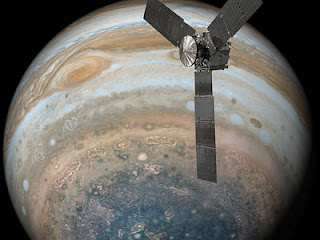Energy
Energy
in physics, the capacity for doing work. It may exist in potential, kinetic, thermal, electrical, chemical, nuclear, or other various forms. There are, moreover, heat and work—i.e., energy in the process of transfer from one body to another.
For the potential energy the formula is P.E. = mgh
The different types of energy include thermal energy, radiant energy, chemical energy, nuclear energy, electrical energy, motion energy, sound energy, elastic energy and gravitational energy.
The formula that links energy and power is: Energy = Power x Time. The unit of energy is the joule, the unit of power is the watt, and the unit of time is the second.
Wasted energy is energy that is not usefully transferred or transformed. Energy cannot be made or destroyed. ... The energy that is not used in this process is wasted energy. For example lighting a light bulb uses electrical energy to make light energy which is useful.
While energy can come in many different types, there are only two main forms of energy: kinetic energy and potential energy. These energies are found in all objects. If an object is in motion (i.e. moving), it is said to have kinetic energy.
Free energy is that portion of any first-law energy that is available to perform thermodynamic work at constant temperature, i.e., work mediated by thermal energy. Free energy is subject to irreversible loss in the course of such work.
Potential energy
Potential energy is stored energy and the energy of position.
Chemical energy is energy stored in the bonds of atoms and molecules. Batteries, biomass, petroleum, natural gas, and coal are examples of chemical energy. Chemical energy is converted to thermal energy when people burn wood in a fireplace or burn gasoline in a car's engine.
Mechanical energy is energy stored in objects by tension. Compressed springs and stretched rubber bands are examples of stored mechanical energy.
Nuclear energy is energy stored in the nucleus of an atom—the energy that holds the nucleus together. Large amounts of energy can be released when the nuclei are combined or split apart.
Gravitational energy is energy stored in an object's height. The higher and heavier the object, the more gravitational energy is stored. When a person rides a bicycle down a steep hill and picks up speed, the gravitational energy is converting to motion energy. Hydropower is another example of gravitational energy, where gravity forces water down through a hydroelectric turbine to produce electricity.
Kinetic energy
Kinetic energy is the motion of waves, electrons, atoms, molecules, substances, and objects.
Radiant energy is electromagnetic energy that travels in transverse waves. Radiant energy includes visible light, x-rays, gamma rays, and radio waves. Light is one type of radiant energy. Sunshine is radiant energy, which provides the fuel and warmth that make life on earth possible.
Thermal energy, or heat, is the energy that comes from the movement of atoms and molecules in a substance. Heat increases when these particles move faster. Geothermal energy is the thermal energy in the earth.
Motion energy is energy stored in the movement of objects. The faster they move, the more energy is stored. It takes energy to get an object moving, and energy is released when an object slows down. Wind is an example of motion energy. A dramatic example of motion energy is a car crash—a car comes to a total stop and releases all of its motion energy at once in an uncontrolled instant.
Sound is the movement of energy through substances in longitudinal (compression/rarefaction) waves. Sound is produced when a force causes an object or substance to vibrate. The energy is transferred through the substance in a wave. Typically, the energy in sound is smaller than in other forms of energy.
Electrical energy is delivered by tiny charged particles called electrons, typically moving through a wire. Lightning is an example of electrical energy in nature.




Comments
Post a Comment